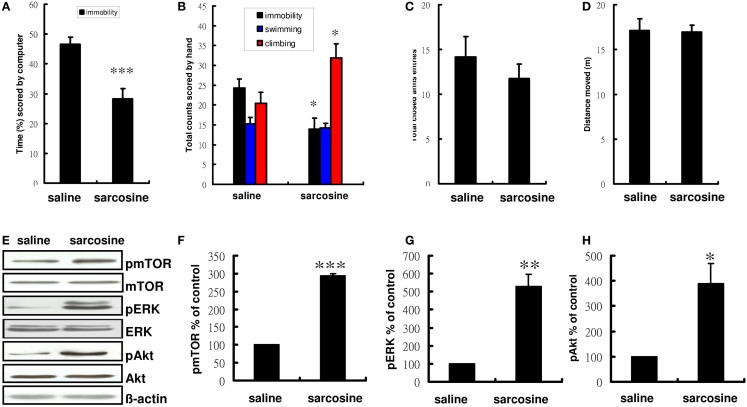Figure 2.
The behaviors and representative Western blotting of rats in forced swim test after acute administration with saline or sarcosine (560 mg/kg, i.p.). In the acute treatment scored by computer (A), the rats received a single injection of sarcosine prior to FST showed a significant reduction in percentage of immobility time. In the acute treatment scored manually (B), the rats received a single injection of sarcosine prior to FST showed a considerable reduction in immobility and an increase in climbing. The general activity [(C), numbers of closed arm entries and (D), total distance moved] of rats in the elevated plus maze (EPM) after acute administration with saline or sarcosine. The total closed arm entries (C) and distance moved (D) in EPM were measured to determine if sarcosine could produce a general increase in general locomotor activity that could yield a false-positive result on the FST. At the doses tested, none increased locomotor activity. Western blots analysis shows a notably increased expression of pmTOR, pERK, and pAkt in rat hippocampus following acute sarcosine treatment (E). The densitometry analysis of the blot (normalized to β-actin) verifies the enhanced activity of pmTOR (F), pERK (G), and pAkt (H) in each group of the experiments. (*p < 0.05; **p < 0.01; ***p < 0.001 compared with saline-treated group as assessed by t-test, Values shown are mean ± SEM, n = 10 for FST; n = 8 for EPM; n = 4 for western blots analysis per group).

